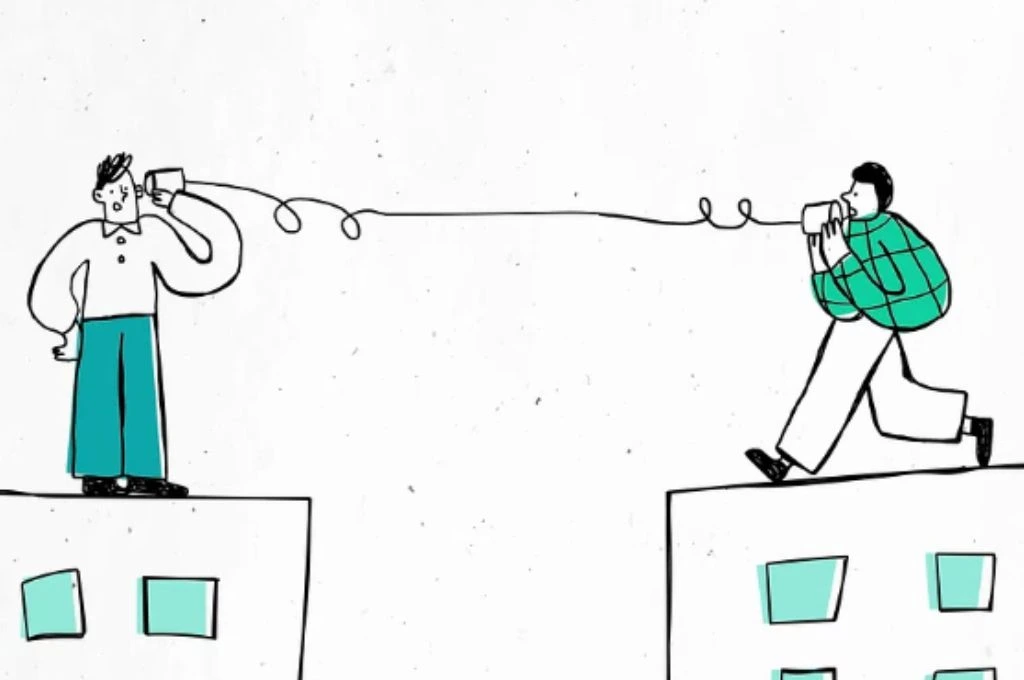Fundraising can take many forms. Given the advent of social media and increasing (albeit unequal) internet penetration over the last decade, digital crowdfunding has been on the rise. Digital crowdfunding refers to raising funds from a larger pool of people using social media or other platforms.
To learn how nonprofits can leverage digital crowdfunding, IDR spoke with Cara Tejpal, previously the director of Conservation Initiatives and now an advisory board member at Sanctuary Nature Foundation, a wildlife conservation organisation. In these roles, Cara has formulated and led five successful crowdfunding campaigns that have benefitted a multitude of grassroots causes and organisations. Much of the fundraising work that she has been involved in has happened across digital platforms.
More recently, between December 2023 and January 2024, Cara worked on the #LookEast campaign, which aimed to raise INR 20 lakh over 14 days to support four community-led conservation projects based in Northeast India. These projects were focused on mitigating human–elephant conflict; conserving wildlife in the Dehing Patkai forest; documenting eco-feminist oral tales of women from various Arunachali communities; and holding diversity, equity, and inclusion (DEI) workshops for grassroots conservationists from the Northeast. The campaign was a collaboration between GreenHub and Sanctuary Nature Foundation, and achieved more than its target.
These are the key takeaways that emerged from our discussion.
1. Do your homework
There are various platforms, such as Ketto, ImpactGuru, and GiveIndia, where a nonprofit or an individual can run a digital crowdfunding campaign. So, it is important to research available options. This involves going beyond the information found on the platform website and reaching out to the platform directly in order to understand whether there are any hidden costs or convenience fees, if thank you notes and donor receipts can be automated, and whether you will be entitled to technical support of any sort.
2. Create a blueprint
Before putting out any information on the campaign, it’s essential to create a detailed plan of how it’s going to run and the various elements that will go into making it a success. Cara tells us, “Usually when I’m planning a crowdfunding campaign, I spend at least 10 days just writing down everything I can about what I’m seeking: the cost, objective, target, collaborators, target audience, timeline, and tools that will be used for the campaign.”
Here are some things that should be included in the blueprint of your campaign.
- The target amount to be raised: The target amount is a reflection of the organisation’s needs as well as the audience that is likely to respond to the campaign. It’s imperative to think about this figure realistically on the basis of the resources available to you and the timeline of the campaign.
- Campaign audience: Understanding the audience helps create targeted messaging and reduces the likelihood of distractions or straying from the path once the campaign begins. Identifying and listing out the specific individuals or groups likely to respond to your campaign is a crucial step in deciding where to direct your efforts. This can include analysing your social media statistics, reaching out informally to potential donors to gauge their interest, and recognising collaborators who have wide influence and reach.
- A content calendar: For digital campaigns, putting out information or content every single day is non-negotiable. Creating a content calendar will allow you to gradually introduce and build context around your campaign and its urgency. This content can include social media posts, WhatsApp circulars, newsletters, donor challenges, donor giveaways, and a host of other creative ideas. Organisers should space out the most engaging content so that there is always something to look forward to. During the brainstorming stage and while preparing the social media strategy, it is also important to plan for ‘slow’ days and a potential lull in the middle of the campaign. For example, if you’re doing a two-week-long campaign, there may be a point after the one-week mark when you’re having trouble raising funds. Think of what you could do to reinvigorate the campaign on days when there is less engagement.
- A timeline: Fix a duration for your campaign on the basis of the target amount to be raised, what your audience is likely to respond to, and your content. Cara mentions that the campaigns she organises are generally intensive and short, at about two to three weeks long. “I find it easier to run shorter campaigns where everything gets tied up within this period, because the longer a campaign runs, the higher the likelihood of lethargy setting in. It can make meeting campaign targets more difficult, and it is tough to sustain motivation and momentum as well,” she notes. There may be certain kinds of campaigns that need a longer runtime, but according to Cara, the few organisations that she has observed trying to run long fundraising campaigns have usually stalled them halfway through.
- Possible collaborators: This can include nonprofits or organisations aligned with the cause that you’re fundraising for, public figures who can endorse your message, or experts who can add weight to your argument. Cara emphasises how having collaborators can be beneficial. “Collaborating with a registered nonprofit lends authenticity to your crowdfunding campaign. Doing this also enables people who might not know you personally to contribute without [any apprehensions about] where they’re donating. Additionally, many donors are keen to receive tax exemption certificates for their donations.”

3. Be realistic about your goals
Before you set yourself a target, you should think about who is likely to engage with your campaign. While leveraging personal connections works—Cara says that she has frequently called on her friend groups to help—one also needs to think about how many people beyond one’s immediate networks are going to participate and what would motivate them to do so. Some other factors that could affect who is likely to respond and how much they give are: how widely your campaign travels (do you want to spend a little money on boosting your content?); how aesthetically pleasing and engaging your content is (can you bring a graphic designer on board?); and how tangible your ask is (people prefer donating towards a visible outcome as opposed to something like ‘running costs’).
In addition, identifying bite-sized goals that you can track over this period will help you stay on course while keeping you motivated. For example, you can aim to receive 15 donations of any amount on day one of your campaign or to raise a particular sum by day four of the campaign.
4. Create a visual identity for your campaign
Social media is a useful tool to amplify the call to action for your campaign. Cara says that she relies on Instagram, but organisations should take advantage of whichever social media platform their team members are fluent in, or wherever the nonprofit has a following.
As part of your social media strategy, you will most likely need to use graphics and other creatives. Visuals are key to digital campaigns, and having genuine images and videos related to the campaign will go a long way. These will not only help spread the word about your campaign, but also aid in building a strong visual identity for it. Having a cohesive look or visual identity to your campaign goes really far, since it adds to recall value. Tools such as Canva have many template options on offer for free. Moreover, you can create hashtags for your campaign to make it readily accessible and distinguishable.
Some causes might be complex or relatively obscure to general audiences, and may therefore require more background knowledge to be provided. Cara tells us that in such cases, she spends time giving the audience some context about the issue during the first half of the campaign. “I also try to answer questions that anyone might have: What am I looking for? How much money do I want to raise? Why do we need to do this? Who are the people it’s supporting? What is the assurance I can give donors that their money is going to be put to good use?” she adds. Hosting live talks or ask-me-anything (AMA) sessions can be very helpful too.
5. Be creative
A campaign that hinges on the same messaging day after day runs the risk of boring people. “If you’re talking about the same thing daily and are unable to get through to your target audience, they’ll eventually mute you,” says Cara. It is necessary, therefore, to inject the campaign with creativity at all stages.
Use art—music, posters, digital artworks—because they can be powerful and will resonate with your audience.
There are several ways of making the campaign more interesting for your preferred participants. For instance, you can do a matching grant, where a bigger donor matches the donations made on a specific day. You can also try reaching out to people in different languages, depending on where your audience is from.
If possible, give people more incentives to participate. One thing that Cara believes has worked for her is giveaways. These giveaways are sponsored prizes won by randomly selected donors at various points through the campaign. “Some giveaways are valued more than others,” she notes, “so we would keep some of the really tempting ones at the midway point, and add other exciting ones on the last day to give that extra push. Over the years we’ve had authors, small businessowners, eco-friendly resorts, and even bakers sponsor giveaways for our campaigns.” You can also find relevant ambassadors to magnify your voice.
Cara highlights the importance of selecting appropriate representatives as well. “It depends on the nature of the cause, but for campaigns such as #LookEast, where the money was being raised for a set of local causes, reflecting local voices was a must. This usually involves interviews with local stakeholders that are then edited or translated into reels, audio clips, and social media posts.”
Finally, work with different media. Use art—music, posters, digital artworks—because they can be powerful and will resonate with your audience.
6. Embrace optimism
“I work in the wildlife conservation space, and optimism can be hard to come by given the widespread destruction of wild habitats and human–animal conflict. But when people are used to seeing a problem framed in a certain way, being optimistic can give you an edge,” Cara tells us. In any case, if the campaign is presented such that it makes it difficult for possible donors to see actionable steps, or if the narrative is pessimistic, it can be difficult to fundraise effectively.
People want to give to causes where they can see tangible action. Maintaining a hopeful outlook while giving your audience a clear view of what you wish to achieve through a fundraiser are, thus, key to a successful crowdfunding campaign.
This article is based on an Instagram Live with Cara Tejpal. Watch the video here.
—
Know more
- Learn how your organisation can get started with retail fundraising.
- Learn about the challenges of crowdfunding in India.
- Learn how to select an appropriate crowdfunding platform for a small nonprofit.
Do more
- Get in touch with the author at caratejpal@gmail.com to learn more about digital fundraising.





